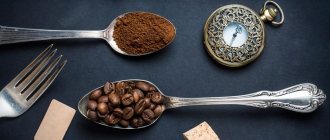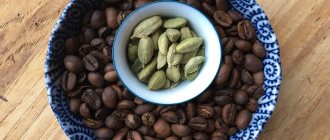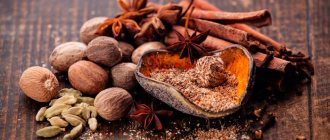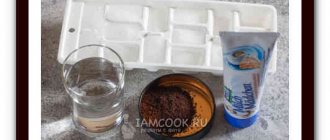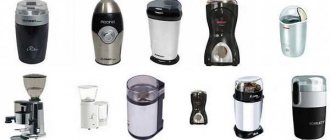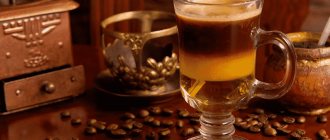What does coffee say?
This or that type of natural coffee makes you think about the following:
- which type of coffee (specific type of plant) produced the crop whose fruits you are now enjoying;
- how the best coffee beans were selected, what they should be in the opinion of the company that collected coffee on its plantations; how the collected coffee was dried and roasted;
- how experienced the coffee picker and processor (representatives of the same company supplying coffee) are in their activities;
- Other aspects and information that he considered necessary to communicate or at least make them known.
Testing (tasting, cupping) of different types of coffee for maturity and taste is a method used in the periodic assessment of the taste and aroma of coffee beans, units from a batch of which are taken to prepare a test portion of the drink. This action includes certain stages, ultimately providing a comprehensive sensory assessment. The most complete testing of coffee is also an attribute of economic benefit, the task of which is to select a coffee mixture that suits the tastes of even the most demanding coffee gourmet. This means that people trying it out adhere to all the manipulations, while at the same time bringing something of their own into the method.
Gustatory, visual, olfactory and tactile sensations are a set of information with the help of which any healthy person is able to tune in to some original and at the same time adequate idea of what real and high-quality coffee should be.
Exhaustive and most comprehensive testing of coffee quality is used by planters to determine the quality of freshly harvested coffee. The second intermediary is the processing company that performs drying and frying. In the end, a tender is held between different coffee suppliers - whoever wins in terms of quality is the first to enter the domestic market of those countries that are more interested than others in purchasing (and reselling on their territory) imported coffee. The competition is not held without a jury - real professionals in this matter.
Evaluation procedure
First, the degree of roasting must be visually determined. This is noted on the sheet. The sequence of evaluation of each attribute is based on the change in taste caused by a decrease in temperature:
Step #1 - Aroma Within 15 minutes of the samples being ground, the dry aroma of the samples is assessed by lifting the lid and inhaling the aroma of the ground coffee. After pouring water, leave the drink untouched for 3 minutes, but no more than 5 minutes. Then the coffee is stirred three times and inhaled. The aroma rating of a drink is the total rating of dry and wet coffee aroma.
Step #2 - Flavor, Finish, Acidity, Body, and Balance Once the sample has cooled to 160°F (71ºC), 8-10 minutes after pouring in the water, the evaluation of the drink begins. The drink is absorbed into the oral cavity in such a way as to cover as much of its area as possible, especially the tongue and upper palate. Since retronasal vapors are most intense at these elevated temperatures, taste and aftertaste are assessed at this time.
As the coffee continues to cool (160ºF - 140ºF), acidity, body and balance are rated as follows. Balance is the marque's assessment of how well Flavor, Finish, Acidity, and Body work together. Cappers prefer to evaluate various attributes at multiple temperatures (i.e. 2 or 3 times) as the sample is cooled. To evaluate a sample, circle the appropriate box on the cupping form. If changes are made (if the sample gains or loses some of its perceived qualities as a result of changes in temperature), the appropriate divisions on the horizontal scale must again be marked and arrows drawn to indicate the direction of the final score.
Step #3 - Sweetness, Uniformity and Purity When the drink temperature approaches room temperature (below 100°F), then Sweetness, Uniformity and Purity are assessed. For these attributes, privateers score each individual cup, and the cup is awarded 2 points for each attribute (10 points maximum). Beverage scoring should stop when the sample reaches 70ºF (21ºC) and an Overall Score is then determined based on the combination of all attributes.
Step #4 - Scoring After scoring the samples, all scores are added up as described in the "Score" section below, and the final score is written in the upper right corner of the window by hand.
Objectives of coffee tasting
The objectives of the tasting are as follows:
- Calculation of certain elements that allow the correct selection of coffee beans;
- Determination of probable violations committed during the cultivation of coffee plants and/or processing technologies for already harvested coffee;
- Designation of a complete picture of sensory criteria that allows you to choose the right coffee raw materials;
- Justification for the chosen decision: how good or bad the coffee is from one or another point of view of the taster, whether the coffee has exquisite taste characteristics;
- Recording the taken “indications” about the quality of coffee, the methods of the person testing it, visual, gustatory, tactile, “smell” (including using the back wall of the pharynx) and other equally important measures.
After all, if the buyer, in general, despite the high-quality taste and consistency of the coffee, is left with an unpleasant and bitter aftertaste, giving off a feeling of bitterness in the throat, it is unlikely that he will choose this variety and name (trademark of the roasting company), which this time he was let down.
Assessment of odor and aftertaste using the back of the throat is carried out after rinsing with clean water. The taster then takes another sip of coffee.
Tasters often conduct their coffee testing in a completely clean laboratory. The fact is that coffee is sensitive to any dust or dirt - it absorbs it like a sponge, and coffee ground into a fine powder itself creates a dust curtain that comes into contact with other liquids.
How can you tell the origin of coffee beans by taste?
Coffee that comes from any major bean-producing area has a distinct smell. Seasoned coffee lovers can identify a region with just a sip. With some practice, you will be able to do this too.
Before we look at each region, let's look at three factors that can affect the taste of coffee.
- Type of coffee. The two main types are Arabica and Robusta.
- Place of growth. Different areas have different climates and different plant growth processes. All this affects the taste of coffee, as is the case with any other plant.
- Processing process. Once harvested, the coffee is processed (washed or natural processes) and roasted. There are a large number of coffee processing methods, and they may vary depending on the region.
Let's take a closer look at a few of the major coffee-producing regions and the unique flavors that the beans produced there offer.
Central America
Central America is a major contributor to coffee supplies. This is especially true for residents of America. Most of the coffee found in the United States is produced in Central America. This influenced the taste of most Americans.
Due to growing and processing techniques, many coffee beans produced here have a sour taste, like apples. There is also an element of sweetness, reminiscent of soft chocolate or baked goods. You'll definitely be able to notice the fruity flavor, although it's not as noticeable and complements the rest of the flavors perfectly.
South America
Most often, South American coffee refers to coffee produced in Colombia. After all, Colombia owns one of the largest shares of coffee production on this continent. Despite this, there are other countries here that produce higher quality coffee. Typically, coffee from Colombia and other South American countries has a less sour taste, but there is also a hint of caramel sweetness and a nutty undertone that cannot be overpowered.
Brazil
You may be wondering why Brazil is not part of South America. The reason is two things. First, Brazil is a major importer of coffee. Secondly, the taste of their coffee is different from the rest of the mainland. Natural Brazilian coffee tends to have a bright, nutty flavor when compared to drinks of South American origin. These coffees also have a chocolate tint. In addition, the taste remains in the mouth, and these beans are best used to make espresso.
Ethiopia
Determining that coffee originated in this country is a little more difficult. The fact is that more varieties of coffee grow in Ethiopia than anywhere else. Some of them are wild and not listed in any catalogues. There are also two different processing methods used in this area. In the first - natural - process, the fruit is dried around the grains, and only then the pulp is removed. In the second - washed - process, the pulp is cleaned 12 hours after harvesting the fruit.
Kenya
The coffee varieties produced in Kenya grow in areas without shade. The processing process involves immersing the grains in water for a day after fermentation. Thanks to this, the coffee acquires a sweetish taste. In some cases, the taste becomes as sour as tomatoes. Sometimes there is a tartness that you recognize immediately. It's a tropical flavor that many coffee experts cite as their favorite.
Indonesia
Indonesian coffee is affected by climate and processing. Most often, the coffees produced here are very dark. They have an earthy flavor. In some cases, you may also notice a smoky taste.
Tasting options
The characteristics of the taste rating of coffee do not change:
- Dosage of coffee in a cup;
- “Fineness” of grinding;
- The temperature of the water in which the coffee will be dissolved;
- A dose that fits in one spoon;
- Roasting time;
- Specific concentration of coffee;
- Quality of lighting in the laboratory;
- Availability and quality of ventilation;
- Preservation of experimental grains in their original form;
Notes on the tasting are entered into the archive.
Cupping or How to understand coffee?
Reading time: 4 minutes
Sitting in a cozy coffee shop and drinking an alternative made from their favorite grain, many have no idea what a thorny and difficult path to a cup this grain has taken. How and who decides what kind of coffee we drink, and how can notes of prunes, chocolate, bergamot and lime be found in the taste and aroma? How is this even possible, since it's just coffee?
In fact, like wine, coffee is a very complex product in its flavor and aromatic substances. Each harvest is different, and directly depends on the weather, region, processing and even soil. At each stage, from ripening to roasting, grains develop a huge number of chemical compounds. And so that you and I drink truly delicious and high-quality coffee, cuppings are held.
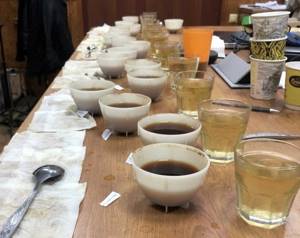
Cupping (from English to cup - professionally tasting coffee) is a reliable way to determine the quality, character, and individual roast profile for each type and variety of coffee bean. The purpose of cupping is to reveal the flavor and aroma properties of coffee.
This is one of the most interesting and important stages; it is here that experts decide which segment a particular variety will fall into. Not only professionals participate in the tasting; more and more companies are holding open cuppings for everyone who is not indifferent to the coffee industry.
The tasting takes place in several stages. Coarsely ground, light roasted coffee is poured into cupping cups at the rate of 11g. For 200 ml. water. Multiple cups are used for each sample. Thus, we minimize the bias in the evaluation of the entire sample due to defective grains getting into the cup and equalize the stability of taste.
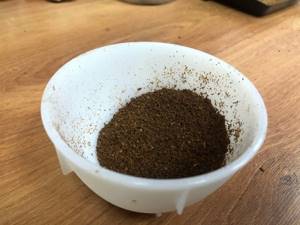
At this stage, the aroma of the ground coffee is assessed. Lightly shake the glass, saturating the particles with oxygen, and bring it as close to your nose as possible. We inhale and appreciate both the overall aroma of coffee and its complex notes, such as nuts, berries and fruits.
Make it a rule to note and write down everything you feel. Do not forget about the subjectivity of taste and never prevent others from forming their opinion by talking about how you clearly caught the notes of green tea.
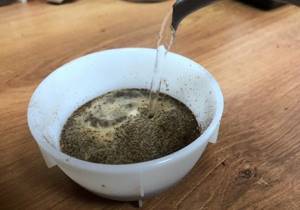
The next step is to pour water heated to a temperature of +/-92 degrees into cups of coffee and leave to brew for four minutes. During this time, a “cap” of ground bean particles forms on the surface, which retains coffee odors underneath.
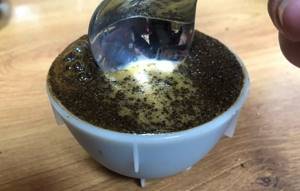
After four minutes, we release these odors by breaking the “cap”. We immerse the cupping spoon into the cup at an angle of 70-80 degrees, and move the “cap” three or four times, moving away from us. At the same time, we begin to intensively inhale and evaluate the aroma of the drink as we approach the cup. We are trying to catch which aromatic notes have appeared and which have disappeared. Having made the necessary notes, the “cap” is removed and the coffee is allowed to cool slightly, giving it the opportunity to open up further.

At the taste assessment stage, the drink is scooped into a spoon and abruptly sucked into the mouth “with a whistle,” thereby using all taste receptors. The “capper” (taster) determines the presence of sourness, balance of the drink, stability of taste and flavor profile (notes of fruit, chocolate, nuts, etc.) At the same time, the presence of defects in taste is taken into account. Next, the coffee is spit out and the aftertaste is assessed. All other samples are evaluated in the same way.
As the drink cools, the “cuppers” repeat the tasting again to assess the purity of the “cup,” sourness, and the presence of taste defects. After this, notes are made on a special evaluation sheet; it helps to simplify and streamline the cupping procedure. The assessment is based on the following criteria:
- Aroma
- Taste
- Aftertaste
- Acidity
- Body
- Flavor stability
- Balance
- Sweetness
- Cup cleanliness
- Defects
- General impression
What exactly is cupping? Cupping is an opportunity to understand coffee, understand the variety of flavor notes of the drink, feel the differences between varieties and develop your taste buds. It can be challenging to master, but developing an understanding of all the components in a cup can help you enjoy your favorite drink even more.
Professionalism of the taster
A person who tastes coffee has certain qualities: good memory and learning ability, constant adherence to the final principles, observance of all attributes of the coffee ceremony and the desire to maintain cleanliness. At the same time, he must have good public relations skills and communicate fluently in a second language, which will allow him to exchange experience and information with representatives of coffee companies from other countries. Most importantly, he has knowledge of all types of coffee grown in different countries and regions.
How to prepare for a tasting
Before evaluating coffee, you need to prepare your equipment. Anyone who wants to take part in the procedure should not drink alcohol, spices, smoke, use perfume the day before - all this dulls perception or makes it false. Toothpaste, the scent of aftershave products, and products with a strong taste also negatively affect sensitivity.
Cupping is carried out with the participation of several tasters, minimizing the risk of error due to individual characteristics of human perception. All those present share their impressions and come to a common conclusion regarding the variety. You can repeat this at home, make the process closer to a professional one and provide great entertainment for friends.
The ideal time for cupping is morning (from 10 am to 12 pm) or evening (from 4 pm to 6 pm). You should first ventilate the room to get rid of any odors. The air temperature in it should be in the range of 20-25 degrees. Choose natural lighting, but it is worth considering that too bright or dim light can have a oppressive or stimulating effect, which will make the assessment subjective. External conditions must remain the same during tasting of all varieties .
Important parameters during preparation:
- purchasing several types of coffee beans, since cupping is best done in the form of comparison;
- identical roasting of all raw materials, it is advisable to choose weak or medium (strong significantly changes the real taste and aroma of coffee) and coarse grinding;
- selection of identical cups for a drink. The ideal material is porcelain, it has good thermal insulation qualities and is also pleasant to the touch;
- drinks must be brewed in the same way, with equal addition of coffee and water, without adding sugar, cream, or other additives;
- the presence of identical measuring spoons, ideally special for cupping or silver, a cup of water for rinsing them, a vessel with boiling water for brewing, measuring containers;
- You need to prepare a glass of clean water to be able to reset the taste impressions and a container for draining the consumed drink.
All participants must be in a good mood and not experience stress or fatigue. It is advisable to prepare notebooks or sheets for recording impressions, as well as pens for tasters.
Sensory Sensitivity Test
This test involves the following steps:
- Indistinguishability of tastes - the inability to distinguish bitter from sweet and sour from salty;
- Sensitivity to various tastes - a healthy person feels all taste sensations, even the weakest;
- By the difference in the depth of taste sensations - how much the subject will react to a weaker and stronger impulse, for example, from a salty-tasting stimulus.
- Distinction of odors, their intensity;
- Distinguishing colors from the full gamut that a healthy person perceives.
All steps are mandatory. If at least one of the points is not passed, such a potential taster will not be hired. Tasters should not exceed the limit on the list of samples being evaluated, which allows them to pass the test quickly and clearly without encountering differences. If the test (and the working assessment) included too many tested samples, the results are significantly distorted, because the brain of the specialist taster is fed up, he does not recognize the aroma and taste with the accuracy that is required of him.
The essence of cupping
This is a tasting at a high professional level, determining the parameters of the aroma and taste of a coffee drink. It is carried out every day in companies that engage in roasting for quality control. If a coffee machine is delivered to your office free of charge when you purchase beans from, this means that the coffee blend you purchased has already gone through the cupping procedure.
From time to time, tastings are carried out in coffee shops to develop the barista's taste experience. You can cup at home to choose your favorite blend. When ordering a free coffee machine to Moscow offices, you can buy several types of coffee to conduct a tasting and find your drink.
Regular cupping is carried out by roasters to ensure the impeccably high quality of their work.
Tasting process
There is no need to add milk, sugar, salt, or spices to coffee - they will distort the natural taste of coffee beyond recognition. The boiling water should be allowed to sit for at least 2-3 minutes - 100-degree water will simply destroy the original taste, aroma and consistency of the coffee; it may darken or, conversely, fade and become not quite what the original coffee should be. Freshly roasted and ground coffee is poured into a cup with water at a temperature of 87-93 degrees. The approximate proportion of coffee is 13 g per 240 ml of water, more precisely 12 g per 8 ounces.
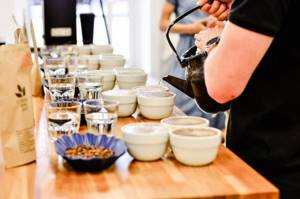
Good coffee always produces sediment in the form of a layer that falls to the bottom of the cup. The rest, including soluble reagents, floats to the surface as a crust. Within 3-5 minutes it softens “on its own.”
Using a spoon, separate the water-soaked crusts into pieces. It is at this moment that the smell of coffee is sharpest and fullest in intensity. More than half of the crust should sink to the bottom. Any coffee grounds that have not fallen down are removed.
The taste and tactile review of freshly dissolved coffee is assessed most fully. A sip of coffee is taken so that the latter completely covers the tongue - if necessary, several chewing movements are performed, at this moment the presence of acids in the drink and the overall strength of the drink are determined. In the first minutes, the taste of coffee is most pronounced, until the receptors become dull; depending on the type of coffee and its quality, the taste should increase or, conversely, become weaker. Tasters do not swallow coffee: they have to take so many samples per day that if they drank it this way, the body would quickly be reminded of a caffeine overdose, which means that after tasting the coffee, it should be spit out, not swallowed. Particular attention should be paid to the aftertaste. When the freshly prepared coffee cools down a bit, say to 60 degrees, the test should be repeated.
Every type of coffee is prepared not in one, but in several containers. If a difference in taste and aftertaste is detected, a batch of freshly released coffee is considered to be non-uniform in terms of beans produced.
It is more expedient to analyze several types of coffee at once. This contributes to the development of taste memory in the taster, while the difference in taste and aroma is most noticeable, and such a person who tastes coffee gains good experience in his profession.
If there are a large number of samples between tasting sessions, the taster can drink some cool boiled water, or eat a small toast of white bread. Tasters are selected based on sensory memory testing.
Professional cupping coffee
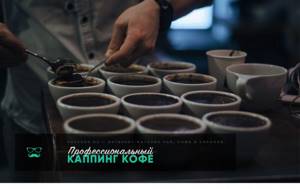
22.11.2017
Hello, dear friends. Today I would like to talk about this topic - where do we start getting acquainted with coffee? The answer is quite obvious - we try it.
Did you know that in the professional coffee world an entire ceremony called cupping
.
“Cupping” or “cupping”, “cup tasting” literally translates as “tasting a cup.” In essence, this is a set of events during which taste
and
the aroma of grain
at all stages of its brewing.
As mentioned earlier, cupping is carried out in the professional coffee industry, for example, after roasting fresh beans, in order to identify its taste, identify its main accents - sour, bitter, sweet - the density of the drink and aroma are also assessed. Also, based on the results of cupping, the barista determines the method in which the grain will be brewed (espresso machine, funnel, aero press, Chemix), and at what temperature. The most aromatic varieties are usually brewed using the pour-over method - funnel, Chemix. In fact, if you wish, you can arrange cupping at home - it’s quite exciting from the point of view of gaining new experience and developing taste buds. To carry out cupping, we will need grain; for starters, we can limit ourselves to three types of Arabica, single variety, from three different countries. For one serving we take 20g. grains of each type. The grain should be ground coarsely, as for a French press (coarse salt). Next, we will need three 200 ml glasses, hot water (95-90°C), and spoons. Professionals use special spoons for cupping, but if you don’t have one, then a regular soup spoon (one for each person) will do just fine.
A description of the process itself follows.
Each cupping participant should be armed with paper and a pen to record the information received about the aroma and taste of the drink for each type of grain.
1. The first stage is the evaluation of ground grain.
20g is poured into each cup. prototype, and everyone evaluates the aroma
, having previously shaken the glass with grain so that the aroma is revealed properly.
When evaluating a scent, we draw an analogy with the smells that come to our minds and what it is associated with. At the same time, it is not recommended to talk and share impressions - everyone own
assessment, because other people's cues can misdirect our perception. It is possible that each participant will get a different result.
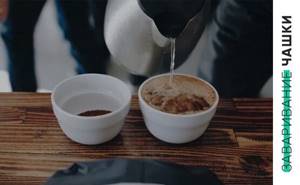
2. The second stage is brewing the cup.
Our prototypes are filled with hot water (90-95°C) and left to brew for 4-5 minutes. At this stage, the grain forms a dense crust, a kind of cap that retains the flavor and aromatic components of the ground grain.
3. The third stage is assessing the aroma of the brewed grain.
At this stage, a process called “ opening the cup”
". The spoon is immersed in the cup, and from the near edge to the far (away from us), at an angle of 75°, we move our coffee grounds, and through the hole formed on the surface of the glass we evaluate the aroma of the brewed cup.
It is extremely important at the “opening” stage to place your nose directly at the edge of the cup, where there will be a figurative hole for the aroma to escape, because This is when the aroma will be most intense.
.
It is very important to find and recognize the most obvious accent in the aroma that will cause you an association
with any product; it can be anything - yesterday’s or fresh bread, wood, grandma’s compote or jam, berries, tobacco, hay or green grass, tea, berries, flowers, citrus pulp or peel, nuts.
Even if you cannot recognize something from the aroma, you need to try hard, think and still fix the association that has arisen in your head of the inhaled aroma with products that have a similar smell. Don’t be afraid and don’t limit yourself in your imagination; I repeat, the association can be the most unexpected!
4. The fourth stage is cup testing.
Before conducting a taste assessment, you should clean the surface of the cup from any remaining pulp by removing it with a spoon. Next, armed with our spoons, we scoop up a small amount of coffee extract, and quickly “squish” it into our mouths with our lips, and without swallowing, chew it in our mouths. Here it is important to involve all receptors in assessing taste. It is important to catch their reaction to recognizing sour
,
bitter
,
sweet
or
salty
tastes. Don't forget to record the results obtained from each cup.
At this stage, another assessment is carried out - the density of the drink.
. It is easier to do this after evaluating all the prototypes, since in comparison the difference in density will be more obvious. I think all of us are able to appreciate the difference in density between water, sour cream and, for example, milk.

5. The fifth stage is taste when cooling.
Next, we carry out the final stage of taste assessment - the change in taste as it cools.
. At lower temperatures, heavy and dense flavors, such as chocolate, cocoa, dried fruits, bread, fade into the background. And acidity comes to the fore - citrus fruits, berries.
It may also happen that one of the samples gives good results
taste when cooling, but when hot it does not have any intensity. Or it could be the other way around.
And now, when all the “measurements” have been made, we can begin the discussion
and exchange of impressions and observations. The recorded readings are compared. It may happen that each cupping participant records his own taste and aroma, which differs from the testimony of other participants.
In the professional world of coffee, based on the results of cupping, the bean is assigned its own unique “calling card”, which is called the “cup profile”. This information is usually indicated on a pack of coffee, or at least the barista must have such information about the grain with which he works. Some grains are preferred for brewing in a funnel, while others are recommended for making espresso, etc.
Cuppings are usually held in coffee shops on weekends, but you can also organize them at home with friends. This is an opportunity to test your receptors
the ability to recognize tastes and smells and develop these skills, regardless of whether you are a professional or an amateur.
Correct evaluation of coffee
In addition to general human indicators at the brain level, such internal qualities of a person as his mentality can play an important role. The laboratory should be protected as much as possible from outside irritants; the organizers of the tasting companies will be located in advance in a place free from noise pollution and other distracting factors, such as, for example, loitering of visitors; the territory of the laboratory is completely guarded.
Factors influencing the correct assessment of coffee by a taster:
- The smell of toothpaste that was recently used to clean the mouth; cosmetics and perfumes used by the taster. Both of these irritants will distort the taste and smell of coffee beyond recognition.
- Time: from 10 to 12 (after breakfast) and from 16 to 18 (after lunch) local time. It is at this moment that the brain experiences a peak of activity, which is used in the interests of performing the work functions and responsibilities of a particular employee - the stomach stops working, and the nutrients obtained from food are sent through the bloodstream to the brain, which needs to work intensively.
- A sufficiently illuminated laboratory room can enhance and highlight the fullness of color perception of the studied samples of freshly imported coffee. But too much illumination, for example, in direct sunlight, is also not recommended: the sun also gives a yellowish tint to the rays, and what is needed is white light, close to daylight in the shade.
- The room temperature of the laboratory is 20...25 degrees Celsius. Higher or lower already significantly affects the overall perception of the taster.
- Relative humidity should ideally be 60%.
- The taster should not smoke or drink alcohol! Alcohol and tobacco substances are reagents that significantly spoil the taste and smell of coffee when tasting it. A “smoked” and “alcoholized” tongue and throat are no longer friends of the taster, but factors that interfere with the latter. Even if you have consumed alcohol and tobacco periodically, before applying for a job as a taster, such a candidate needs to thoroughly cleanse the body of these harmful inclusions and, in general, become extremely healthy.
Cupping rules
In order to obtain the most realistic results during cupping, you must adhere to the following rules:
- On the day of cupping, do not wear perfume, creams or skin care products. Extraneous odors will distract from the perception of the aroma of coffee.
- Taking a full sip of coffee from a cup is not recommended. It is advisable to sip the drink sharply from the spoon - this will allow it to be completely distributed throughout the mouth, reaching all taste buds. Therefore, do not be shy about actively squelching during tasting.
- You cannot hold the cup in your hands while coffee is being brewed in it - this violates the temperature regime for brewing the drink. A cup of coffee remains on the table throughout the entire brewing procedure. It is also advisable not to move her or make any sudden movements near her.
- You should not rinse or wash the spoon while tasting one variety. It should be rinsed in a special glass of boiling water, blotted on a stack of napkins, and only then proceed to tasting another variety.
- Do not participate in cupping if you have a cold. Firstly, you endanger other participants in the event, and secondly, your taste buds practically do not work during illness, and there is no point in the procedure being carried out; you still won’t feel anything.
- Before tasting, we check each glass for cleanliness and dryness. You should also drink water to refresh and prepare your taste buds for work.
Be sure to read: How to find premises for a coffee shop
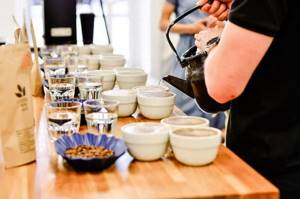
Cupping cup and spoon requirements
The cup must be porcelain, earthenware or ceramic (and not glass, wood, plastic or metal). The fact is that porcelain itself is pleasant when you touch the edge of the cup to your lips, and also does not conduct heat unnecessarily - this is important, because the water will not have time to cool below 87 degrees, necessary for infusing coffee that has just been poured into hot water.
The preferred form factor of a coffee cup is precisely in the form of a tulip. The base of the cup is widened at the bottom and narrowed at the top - and not vice versa, as with most mugs, cups or glasses.
It is advisable to use a spoon of an asymmetrical shape, wide in itself and not so deep that the drink cannot be seen. But a significant part of professionals use ordinary ceramic or metal-ceramic spoons.
Cupping as a way to develop receptors.
Cupping (cup-testing) is a coffee tasting, during which the characteristics of taste and aroma are determined in order to select and classify coffee varieties. This process reveals the strengths and weaknesses of a particular grain. It is carried out at almost all stages of coffee production and is a ubiquitous and often daily practice in the professional coffee community.
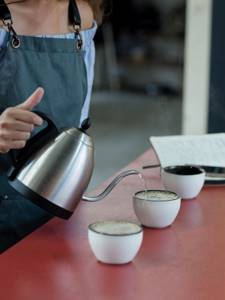
Captesting championships are regularly held around the world. The point is to guess the country where coffee grows just by tasting the drink using a special cupper spoon. Another option is possible when the participant is given eight stations of three cups each, in two of them the same coffee is poured, and in the third it differs for some reason (country, processing, brewing time, etc.). The cupper's task is to identify the “extra” cup in each group.
If you want to learn to understand coffee, start to understand its tastes and are interested in training your taste buds, then cupping is the best tool for this. This professional procedure can be easily performed at home.

To do this you will need: a 200 ml cup or glass, a coffee grinder, a spoon and boiling water.
- To begin, pour 12g of coarsely ground coffee into a cup - at this stage the aroma of the ground coffee is assessed.
- Then slowly pour in hot water in a circular motion (its temperature should be about 95C), so that all the particles of ground coffee have time to mix and begin to participate in the brewing process.
- Leave the cup at rest for exactly four minutes, during which time a “cap” will form on the surface - a crust of clumped coffee particles that retains coffee odors. After four minutes, “break” the resulting crust with a spoon, making three movements away from you towards the far wall of the cup. At this moment, the aroma of the drink will be especially intense, do not forget to appreciate it.
- Then remove the “cap” and completely clean the surface of the drink from coffee particles.
- Wait until the coffee has cooled down sufficiently (10 minutes from the moment you poured the cups) and begin assessing the taste.

The first time this tasting format looks quite unusual - a small amount of coffee is scooped into a spoon and sharply, with a sound, is sucked into the mouth - so that all receptors are simultaneously activated (Professionals call this sound “sorbing”). Try your cup at different temperatures because the taste of the drink changes as it cools. When assessing taste, pay attention to the degree of acidity, intensity of sweetness, balance and aftertaste.
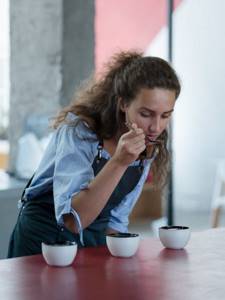
The recipe for brewing a capper cup is very simple and you can transfer it to a brewing method such as a French press. Take the same gram of coffee and water, brewing time and after four minutes pour the coffee into a cup.
Come to cuppings at Sibaristica, drink more different coffees, have fun, don’t be a snob, eat consciously, try more fruits, berries, nuts and dried fruits - develop your receptors!
What is cupping?
In every area related to the food industry, there are processes for assessing the quality of products - in simple words - tasting. Thus, from hundreds of similar samples, experts select those that will later go on store shelves and counters. In the world of coffee, such tastings are called cuppings, and play a fateful role for any grain.
Cupping is the process of professional coffee tasting. This is done in order to develop receptors and enrich taste memory, to understand the differences between varieties, what exactly the taster likes, and in order to try something new. During the tasting process, the shades of taste and smell of coffee are determined. There are so-called World Cupping Championships, they are also organized in coffee shops in large cities of Russia, or you can even arrange a tasting at home in order to understand coffee and choose your favorite variety.
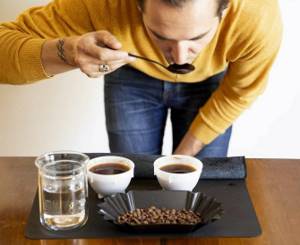
Accessories used for cupping:
- coffee,
- coffee grinder,
- glasses,
- spoon,
- hot water.
Stages of implementation:
Light roasted coffee is used for cupping. The grind size is coarser than espresso, close to a pour over or aeropress. For every 200 ml you need 11 grams of coffee.
1.Introduction to grain. You need to pour different types of coffee beans into glasses, bend over and try to feel the coffee notes.
2. After that, you need to pour hot water with a temperature of 92 C into the glasses in a circular motion.
Try not to touch the glasses; any movements can interfere with proper brewing and contribute to the destruction of the coffee head, the coffee may not open.
3. When about 4 minutes have passed and the coffee has brewed, you need to “break the cap” and evaluate the aroma again. To do this, approach the glass, immerse the spoon at an angle of 70–80 degrees and, using three or four movements, move the “cap” to the far wall of the glass. At this moment, odors will be released from under the “cap” and you need to inhale them intensively. Notice how the smell of coffee has changed: which notes have appeared in the coffee, and which, on the contrary, have disappeared.
4. Let the coffee cool slightly to avoid burning yourself. Take a tablespoon of the drink and quickly pour it into your mouth to cover all taste buds. This is why special deep spoons are used, where more liquid is placed.
5. Note what you felt in the taste and taste the coffee in the remaining glasses according to the same pattern.
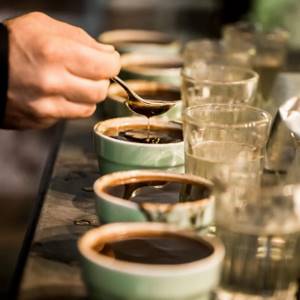
When cupping, the following parameters are assessed:
- Taste and profile of the drink - notes of nuts, flavors of chocolate or tropical fruits, etc.;
- Aftertaste;
- Acidity/bitterness;
- Defects – taste of mold, dampness, earthiness, grass, etc.;
- The density of the drink, or in other words, its “body”;
- Balance;
- Sweetness;
- Stability – if you brew the same variety in different cups, will the taste be the same?
It is not necessary to evaluate all parameters, since it is difficult for novice captasters to determine the balance of taste. Select the ones you can distinguish using the coffee taste wheel and write down your impressions.
A few important rules:
1. Before tasting, prepare your receptors - drink a small amount of water.
2. Before cupping, try not to use perfumes and creams, because this will most likely distract both you and those around you.
3. Rid the drink of unnecessary objects - collect your hair.
4. Don’t be shy about “sipping”—sipping your drink loudly.
5. Blot and wipe the spoon after each sample - this way the varieties will not mix during tasting.
Such tastings can become not only a source of new taste sensations, but also a way to enjoy the moment.


